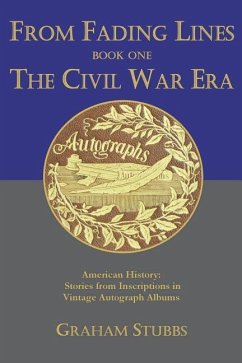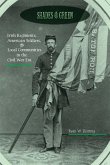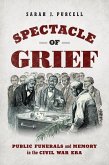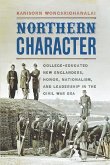The stories that constitute this book emerged from researching old autograph albums in the author's collection. From fading lines that once were once used to keep alive the memory of schoolmates, friends and relatives come inscriptions with names and dates and places that connect us to individuals who lived through the Civil War era. The original owners of the albums were mostly mothers, wives, daughters and cousins of the subjects of the stories. Whether their names were recorded in the years before, during or after the War, these Americans all experienced that terrible event in one way or another. For this book the author selected equal numbers of narratives from North and South. While a majority of the subject individuals are soldiers, there are pharmacists, merchants, politicians and an inventor, all of whom were embroiled in the conflict. Autograph albums vary in greatly form and also in the terminology used to described them. In addition to "autograph albums", the terms include commonplace books, remembrancers and friendship albums. Closely related are scrap-books, diaries and journals. It's not unusual to find elements of several of these categories in the pages of an autograph album. The common thread is content that is primarily handwritten, and that was assembled by or for the owner. Academics sometimes use the term "assembled books". The earliest of the albums from which stories are drawn for this book date from the eighteen-thirties when the custom of writing one's own notes in what was called a commonplace book was evolving into requesting inscriptions from friends, schoolmates and relatives. The physical style of the booklets evolved considerably during the nineteenth century, as did the nature of the written inscriptions and the quality of penmanship. Albums from the period before the American Civil War tend to have superior bindings and paper, and often yield the most elaborate and artistically decorated inscriptions. Examples reflect the steady westward migration of population in America, and from every decade from the 1820s to the early part of the twentieth century. Illustrating some of these stories are examples of extraordinary penmanship, poetry and miniature paintings. In the early eighteen hundreds, young ladies in finishing schools were encouraged to learn the art of painting in miniature. A common reaction to examining an early autograph book is to be impressed by the superb quality of handwriting, the result of an education which employed formal systems of teaching for penmanship, such as Copperplate and Spencerian Writing and the Palmer Method. The quality and subject matter of poetic entries varied enormously through the nineteenth century, declining in the later decades. Some verses are original and some are copied, indicated occasionally by a phrase such as "selected for the album's owner". As albums became more and more popular by the eighteen-seventies for use by younger children, books were published of examples of what was suggested to be "suitable verse". No matter whether elegant verse or doggerel, meticulous script or child's pencil scrawl, miniature watercolors or crayon cartoon caricatures, the albums' contents have a ring of authenticity. At one time or another, each signed entry was the expression of how one particular individual, on a specific day and in a particular place responded to a request for "something for the Album". As such, the handwritten lines in autograph albums provide more precisely than most antique artifacts, windows into American history. www.fromfadinglines.com








